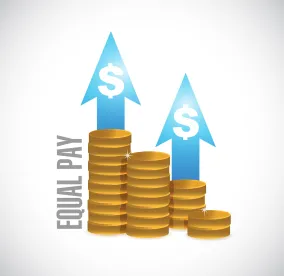A draft proposal of the new European Union (EU) Pay Transparency Directive published by the European Commission in 2021 revealed plans for significant reforms to equal pay initiatives. The proposal sets out significant increases to employers’ pay transparency obligations in EU jurisdictions. Since then, the draft has been progressing through the EU legislature which comprises the European Parliament and the Council of Ministers.
On 30 March 2023, members of the European Parliament voted to endorse an amended version of the proposal by a large majority. The Council of Ministers will subsequently formally endorse the agreed proposals, following which the directive will be published in the Official Journal of the European Union. On the twentieth day after publication, the directive will become effective and will apply to member states.
Quick Hits
-
Women earn on average 13 percent less than men in the EU, according to the Council of the EU.
-
The EU Pay Transparency Directive applies to both private and public employers, and all workers.
-
Member states will have two years after the directive is finalised to implement its provisions at a national level.
Purpose of the Directive
According to the Council of the EU, men in the EU currently earn on average 13 percent more than their female counterparts. Reforms on pay transparency have been prompted by the EU’s desire to expedite the reduction of this gender pay gap because in its view, this has “largely stagnated over the last decade.”
In the draft proposal, this lack of progress is attributed to equal pay being “hindered by a lack of transparency” and the burden is too great on victims of equal pay discrimination, thereby hindering their chances of a successful claim. While some EU countries already have pay transparency measures at a national level including annual reporting, these reforms are deemed necessary by the EU to implement firm structures and facilitate visible change.
What Is in the Directive?
The draft directive specifies that the reforms will apply to companies in both the public and private sector, while all “workers” will be covered. Member states are obliged under the proposals to either institute a designated equality body for the purposes of upholding the pay transparency principles, or designate an appropriate existing one.
Equal Pay for Equal Work – Article 4
Member states will be required to equip employers with tools and methods for gender-neutral job evaluations. This will ensure that objective criteria are applied such as education, skills, and professional qualifications or training.
Transparency With Salary Data – Articles 5, 6, and 7
Prior to interview employers will be obliged to provide applicants with starting salary and salary ranges of roles for which they have applied. Under Article 5, employers will be prohibited from asking applicants about their pay history.
Article 6 provides that employers will share the gender-neutral criteria used for pay determination and career progression with their employees.
Article 7 establishes that workers will be entitled to receive information about their own pay level but also the average pay levels of others in the same roles or carrying out the same work or work of equal value, broken down by sex. Employers will be obliged to annually remind their workforce of this right, and cannot ban workers from discussing their own pay information if disclosed in the context of equal pay.
Reporting and Assessments – Articles 9 and 10
Mandatory pay reporting will be introduced under the directive. Article 9 sets out the required calculations that will apply annually to employers with at least 250 workers. Employers with 100 to 249 workers will eventually also be required to produce a report every three years. The accuracy of this information must be confirmed by company management and may be published on the employer’s website. An explanation of the data is not required, but if workers or equality bodies have questions about the report, the company must respond within a reasonable time. This data will be collated by the designated equality body to allow comparison between employers nationally, and will be publicly available.
For any reporting employers with a gender pay gap of at least 5 percent that cannot be justified by objective, gender-neutral factors, Article 10 empowers member states to ensure that these companies are subject to a joint pay assessment. This is designed to identify reasons for the pay disparities and rectify those that can only be attributed to gender.
Access to Justice – Articles 15, 16, 18, and 19
The draft directive includes many measures to empower claimants in equal pay disputes. Organisations with a “legitimate interest” in gender equality (according to national law) must be permitted to bring proceedings on behalf of a worker alleging pay transparency infringements (Article 15). Article 18 stipulates that member states must ensure that in any proceedings where an employer has not complied with the transparency rules for applicants (Article 5) or the pay assessment (Article 10), the burden of proof is automatically on the employer to show that there has been no discrimination.
The directive prohibits any fixed upper limit on compensation for workers who are harmed by pay transparency infringements (Article 16).
Penalties – Article 23
Employers that infringe on their workers’ right to equal pay will be penalised by a set minimum fine that increases in accordance with the culpability and scale of the breach. Persistent offenders will be specifically penalised further, and the proposal suggests revoking public benefits for a limited period. Member states may allocate any funds received from such fines to the relevant equality body.
Statistics – Article 31
Member states will need to provide the Commission with gender pay gap data on an annual basis, and the data must be broken down by gender, age, economic sector, part-time or full-time worker status, and confirm whether the data is from a public or private company.
What Does This Mean for Employers?
Many EU countries already have some form of reporting requirements. In 2022, Ireland introduced mandatory pay reporting for employers with more than 250 employees, but there is no requirement under the legislation to take action on any disparity or confirm accuracy of the calculations. In France, companies with more than 50 employees must annually calculate their workplace “gender equality index” based on performance across a set of gender equality indicators. The results must be published on the company website accompanied by any proposals for any necessary remedies. Employers in Germany with 500 or more employees must conduct pay reports, and individuals can receive information about the average remuneration of a group of at least five employees of the opposite sex working in equivalent roles at companies with 200 or more employees.
While reporting and monitoring is becoming commonplace, national legislation that entitles individuals to their peers’ salary data in a non-litigious context is far less prevalent and will likely be unfamiliar territory to many employers. The liberation on salary discussion in the context of equal pay may also be a significant change in company culture, and employers may decide to begin evaluating their recruitment, performance evaluation, and remuneration policies and procedures in preparation for the changes. However, the directive is yet to be published, and once in force, member states will have two years to implement its provisions at a national level—so the full impact of this directive has not yet been revealed.




 />i
/>i

